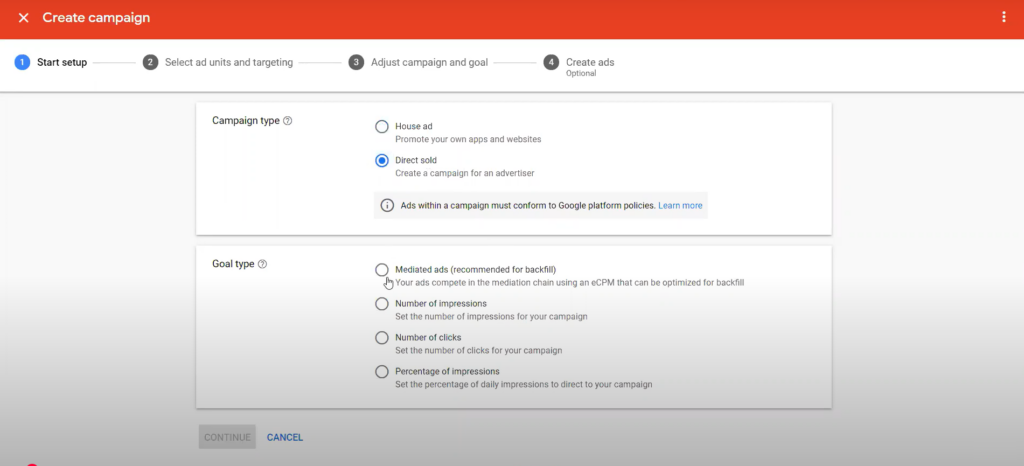
For mobile app publishers, direct deals offer significant benefits, such as revenue stability, higher fill rates, user-friendly ad experiences, and better monetization of unique mobile inventory. If your app monetization relies on AdMob, Google Ad Manager, AppLovin MAX, or Unity LevelPlay, in this article, you will discover what these platforms have to offer when it comes to direct deals.
What are direct deals when it comes to mobile apps
A direct deal is an arrangement between publishers and advertisers, the main aim of which is to sell a predetermined number of impressions for a specific ad campaign at an agreed-upon price. With direct deals, advertisers secure ad space at a set price, avoiding auction dynamics, while publishers, by bypassing intermediaries, typically earn a higher eCPM. This arrangement works for mobile apps and websites and usually includes getting a deal with an ad network or directly with an advertiser.
Direct vs programmatic advertising
A subset of the direct deal is Programmatic Direct, which involves executing direct deals via programmatic platforms to, for instance, streamline delivery, tracking, and reporting. However, it is not a typical programmatic option because there is no need for an auction. Here are the main types of Programmatic Direct:
- Programmatic Guaranteed (a guaranteed deal) is an agreement where the inventory is set aside solely for a specific buyer;
- Preferred Deals (non-guaranteed deal) refer to situations where the buyer has priority for buying inventory but is not obliged to do so. If he resigns, the inventory will go to the open or private marketplace for bidding.
Pros and cons of direct deals
- Direct deals offer high transparency, as both sides of the transaction should know precisely what they agree to. To avoid misunderstandings, the agreement should be detailed and include billing details, impression numbers, start and end dates of campaigns, etc. Such a contract is called an Insertion Order (IO);
- This way of selling ad space typically means more competitive prices and higher fill rates than other methods. This is because advertisers are prepared to pay more to tailor their needs and direct deals often prioritize ad delivery;
- On the downside, direct deals are more time-consuming, although many platforms like Google Ad Manager or AppLovin MAX help to streamline the process;
- After all, direct deals also mean reduced flexibility, as they often involve contractual obligations that both parties have to meet.
Direct deals in Google Ad Manager and AdMob
Mobile app developers monetizing their digital products with Google Ad Manager and AdMob can utilize features to streamline direct deals.
Google Ad Manager offers a wide range of possibilities within the “Programmatic Direct” feature. Publishers can decide to sell their inventory on guaranteed or non-guaranteed terms, and the negotiation process occurs within GAM, even with the possibility of proposing changes. Additionally, the feature manages impression tracking, billing, and payments, minimizing the errors from manual handling. Other capabilities include attaching detailed terms to a proposal or the ability to adjust and renegotiate previously finalized campaigns.
Google AdMob helps to streamline direct deals with the aid of campaigns. To start selling your ad inventory, you must set up a “Direct sold campaign” that you create for an advertiser. Compared to the Google Ad Manager solution, AdMob is simpler, aimed at straightforward, direct-sold campaigns, and does not handle billing and payments. However, in the panel, you can set up goals, like number of impressions/clicks, max cost per install (still in beta version and available only for Android), and choose advanced targeting options.

Direct deals for AppLovin MAX users
The company offers three main approaches for mobile advertisers interested in Direct Sold deals: direct-to-advertiser, promotional/cross-promotional, and backfill campaigns. Direct-to-advertiser campaigns involve publishers working directly with advertisers to sell their app’s ad space. With promotional/cross-promotional campaigns, publishers and studios use their own ad space to promote their products or apps. The primary purpose of backfill campaigns is to fill ad space that hasn’t been sold to external advertisers with app owners’ ads. Moreover, AppLovin’s MAX platform includes Direct Sold Reporting – a tool that provides granular, real-time analytics on direct-sold campaign performance.
Direct deals for Unity LevelPlay users
ironSource’s system allows you to efficiently manage and customize direct ad campaigns within your app’s bidding platform. The system works with various ad types, including Rewarded Video, Interstitial, Banner Footer, and MREC. Additionally, you can customize the frequency of ads shown to users (capping) or use advanced targeting and pacing options (meaning control the rate at which ads are delivered over a specific time period). The company also offers Unity LevelPlay data cube to its users, a specialized tool for viewing reports on direct-sold campaigns.
What’s more, it’s worth mentioning that CPM pricing is the most popular and commonly available model across all the platforms mentioned in the text (Google Ad Manager, AdMob, AppLovin MAX, and Unity LevelPlay). One of the main reasons is CPM pricing offers predictable earnings for publishers since ad revenue is tied directly to the number of impressions rather than user interactions like clicks or installs. However, while CPM dominates, platforms may still support other pricing models based on the campaign type and advertiser preferences. When speaking about service costs – the platform fee – they vary depending on the platform. In the case of Google, the fee is based on a small percentage of revenue share.
Powerful trio – direct deals, bidding, and waterfall
Platforms like AppLovin MAX, Unity LevelPlay, GAM, and AdMob offer robust tools to support mobile publishers executing direct deals. However, to create a balanced and resilient revenue structure, mobile app publishers should diversify their income sources. In addition to direct deals, utilizing real-time bidding (RTB) auctions and the waterfall model can further enhance monetization. If you want to enhance your monetization abilities even further, consider working with a monetization partner, like Bidlogic, who can take care of ad mediation management to maximize ad revenue.
